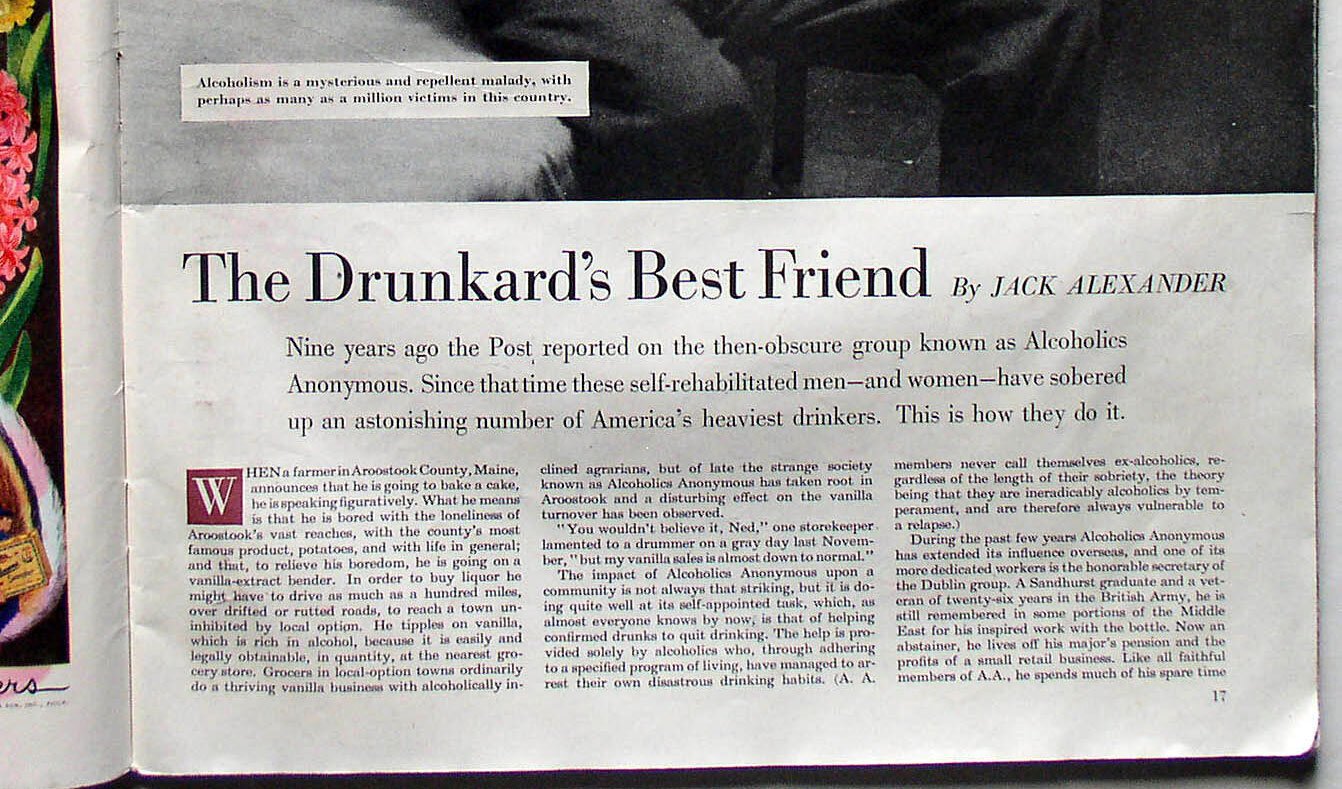“Rehab” Done Differently
A Short History of Addiction Treatment in America
Addiction treatment over the past 100 years has come a long way. Especially when considering people who struggled with alcohol and drugs were reduced to terms like, “sinners”, “junkies”, and “drunks,” and at best found help in the form of spiritual direction. Not that people didn’t experience change, some did. But culturally, addiction was crammed into the dark spaces of stigma and misunderstanding, leaving those who struggled with very limited options for help.
From this “dark age” of addiction treatment came the birth of Alcoholics Anonymous. AA along with the Oxford Groups, was American societies first real step toward helping people recover from addiction. AA became a safe place for people struggling with addiction to experience understanding, support, and guidance through the recovery journey. For the first time, people who struggled with addiction could come out of the shame and stigma that drove their addiction in the first place.
This cultural shift for people in recovery opened the door for a “second wave” of addiction treatment, known as “rehab.” Rehabs were typically characterized by 30-90 day self pay inpatient programs utilizing 12-step philosophies, group therapy, and substance abuse counseling. The second wave of addiction treatment was a period where hundreds of rehabs began popping up across the country, notably in destination locations such as Florida and California.
In 2010 everything in the “rehab” industry changed. For the first time, healthcare insurance would be required to cover addiction treatment as a result of the Affordable Care Act. As momentous an event this was for the addiction treatment industry, particularly in terms of how treatment could be paid for, greed and exploitation were now set up to drive the industry. Rehabs, sober living homes, and urinalysis labs soon riddled Southern California and south Florida, largely chasing dollar signs. Some of these entities were legitimately helping people, but many others took advantage of insurance companies and people and families struggling with addiction. It became a goldmine for a relatively new industry that lacked regulations and people were being hurt by it. The second wave of addiction treatment created a human rights situation that demanded reform. It was a bad recipe of greed, limited regulations, and an opioid epidemic that desperately needed to be corrected.
This correction is what some refer to as the “third wave” of addiction treatment. Third-wave treatment centers are those that are characterized by ethics, a focus on evidence-based practices, and an ethos embedded in societies well-being rather than profit margins. Peace Club is a third wave treatment center attempting to reshape people’s view of addiction treatment. Here is what makes Peace Club special.
Space & Design
We know that not only how we spend our time, but where, has a huge impact on our mood and motivation. We reject overly-sterile, stuffy environments and believe that a space designed for healing need not resemble a hospital room. Clean, minimalist, aesthetically pleasing; we aim to be intentional in the atmosphere that we cultivate, and always leave room for authenticity, vulnerability and inspiration.
In surrounding ourselves with beauty, we’ve created an environment where you can be encouraged to feel safe, and to dive into deeper opportunities for reflection, and heightened levels of meaning.
Mindfulness Based
Infusing mindfulness into our treatment process involves increased attention to the everyday details of life; to the way we go about living, breathing, eating and being.
Allowing these principles to dictate our relapse prevention programming, our clients have found an increased ability to pause, observe present experience, and bring awareness to the range of choices before them in every moment. In working towards developing a detached and de-centered relationship with our minds, we can learn to look at our thoughts rather than from them and interrupt the all-too-familiar cycle of automatic substance use behavior.
Experiential Approach to Treatment
We believe that the change process evolves not only through exercising the capacities of your mind and bringing awareness to problems in thinking, but also in giving opportunity to experience change through movement. We trust in the complementary nature of changing the body along with the mind, and allow for real-life corrective experiences of ‘doing something different’.
Whether through challenging yourself in an adventure therapy outing, participating in individual EMDR sessions, surfing, beach walks, or yoga, we believe in treatment that gets you out of your head and into real-life.
Dual Diagnosis
The treatment of comorbid conditions (one’s substance use and mental health disorder) simultaneously arose from a dark period in the history of treatment for mental health and addiction when clients were passed back and forth between programs, each claiming the necessity of tackling the other disorder first, making recovery dependent upon the individual’s ability to effectively manage one condition before the other. What this often left were individuals falling through the cracks of a system that was never actually designed for them. Substance misuse is often the result of untreated mental health disorders. This is why we prioritize mental health diagnostics and treatment. Unlike many facilities, Peace Club is competent and willing to work with clients that present with severe mental health disorders.
We understand that rarely are one’s experiences with addiction not driven or complicated by mental health disorders, and so we take the time and have the experience to address both through exhaustive assessments, such as MMPI’s, or through psychiatric evaluations, to ensure clients are prescribed the most appropriate therapy and medications.
Trauma-Informed
Because how can we expect to treat one’s substance addiction while ignoring the other factors that contribute to its place in our client’s lives? Of those interviewed in a recent study who identified that they have a substance use disorder, 95% also reported exposure to at least one traumatic event in their lifetime, 43.3% of whom identified their trauma as moderate to severe abuse in their childhoods.
In today’s treatment world, a lack of awareness of this connection, and a failure to acknowledge the contribution of trauma to the development of an addiction would be of a great disservice to those we aim to serve. Not to mention this would be a failure to address the root cause of the issue and reasoning behind many of the corresponding addictive patterns, especially in light of treatment modalities such as EMDR and ART that have shown great effectiveness in facilitating healing from such overwhelming experiences.
Harm Reduction
What we have learned from the “war on drugs” is a great number of things that do not work for those struggling with addiction, including incarceration. As the Drug Policy Alliance poignantly points out, “handcuffs will not solve the overdose crisis”. While it may not satisfy our callow ‘demand for justice’, harm reduction tactics are proven to work; as the main objective is to reduce the rate of adverse events arising from substance abuse while also keeping people safe.
We believe that people aren’t perfect, but that they deserve every opportunity to get the help they need, and to be treated with kindness and compassion along the way. Our medical director actively oversees the medical care of our clients, whether it is through medication management, telemedicine visits, medication-assisted treatment (MAT), Suboxone tapers or Vivitrol shots.
Affordability and Length of Treatment
Most treatment facilities seem to offer treatment packaged in 30-day or even 90-day formats, however, research is consistent in admitting that this is often not enough, especially when it comes to those struggling with an opioid use disorder. In fact, for individuals using medication-assisted treatment, 12 months is the minimum recommended time for treatment to be effective.
We believe in making treatment affordable so that you can stay for the length that you actually need in order to produce real and lasting change. This means we price services under most other programs, incorporate payment plans, financing options, and prioritize grant and scholarship partnerships. Our goal is for people to complete 9-12 months of treatment at our facility.
Spirituality
Many individuals find recovery to be a spiritually-charged time in their life, and for good reason: engagement with meaning, purpose and discovering and refining one’s worldview is absolutely essential to the recovery process. Oftentimes through learning to be open to a power greater than oneself, inspiration and creativity will follow, essential ingredients to a life well-lived.
We believe in creating and sustaining practices that support recovery, namely the moments of renewal and transcendence that so often accompany discovery of one’s spiritual nature.
Diet
Our physical form and mental experiences are so intricately linked that what we put into our bodies and how we move our bodies has immense impacts on how we feel.
When we’re emotionally deregulated, and reach for comfort food or sugary drinks, we’re actually just using yet another substance or thing to try to calm the storm inside.
We believe in helping you construct healthy habits, that often starts and ends with what we eat, and what works for your specific body.
Community
We are not meant to exist alone: community is essential to survival. Through forging relationships with others in our program and developing ties with those in the community we know that healing and transformation can happen.
All those who walk through the door of Peace Club are invited to join the movement towards healing and recovery, and to remain connected, even as they graduate from our program and return to their homes and communities.


